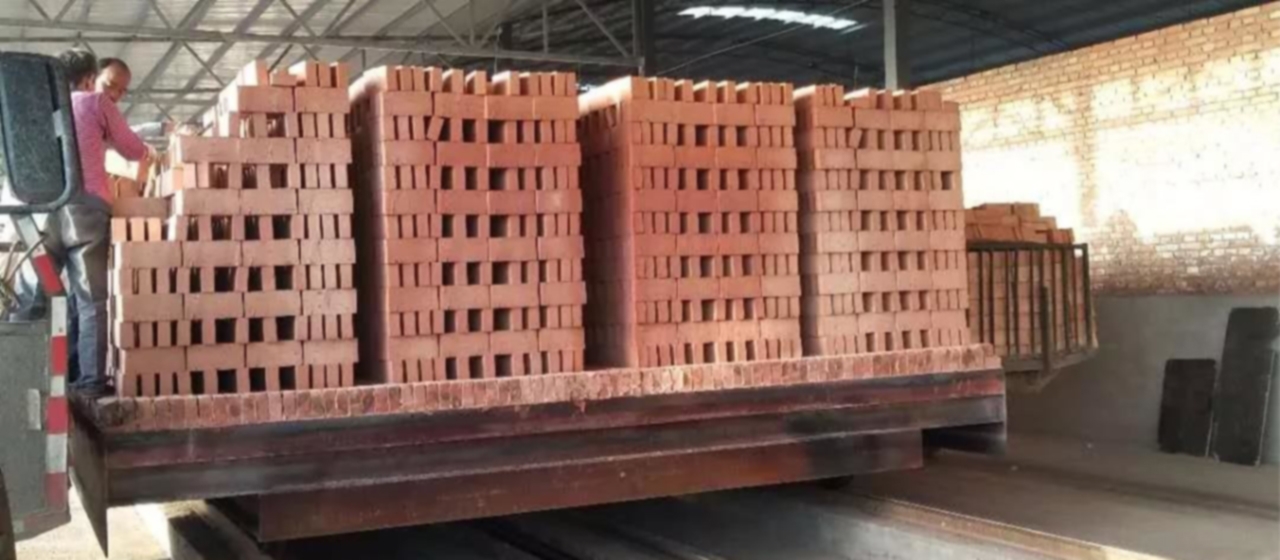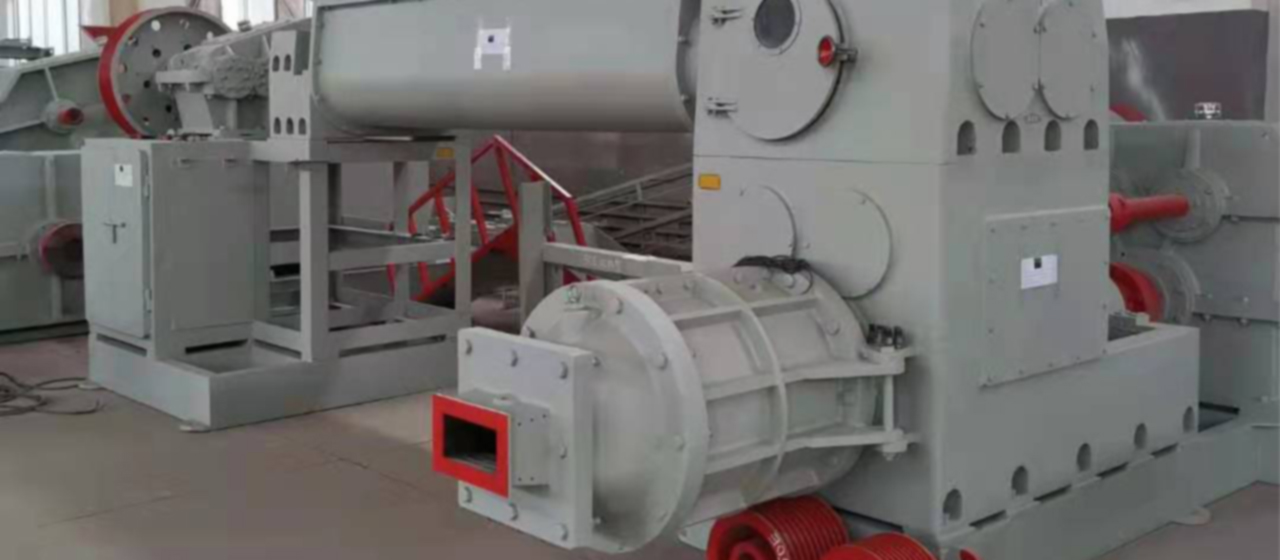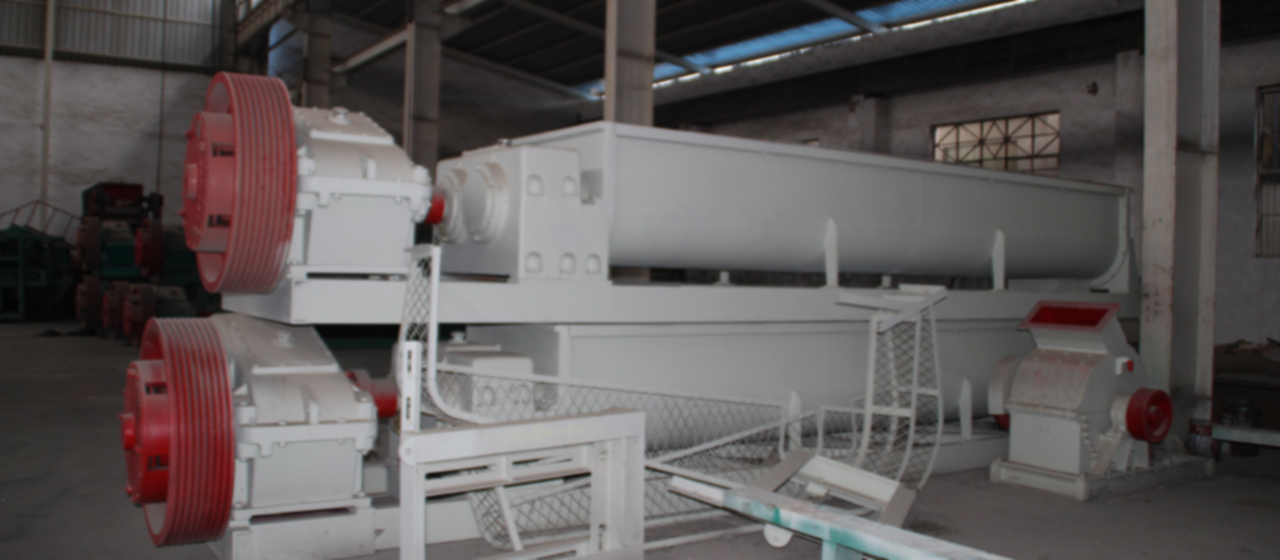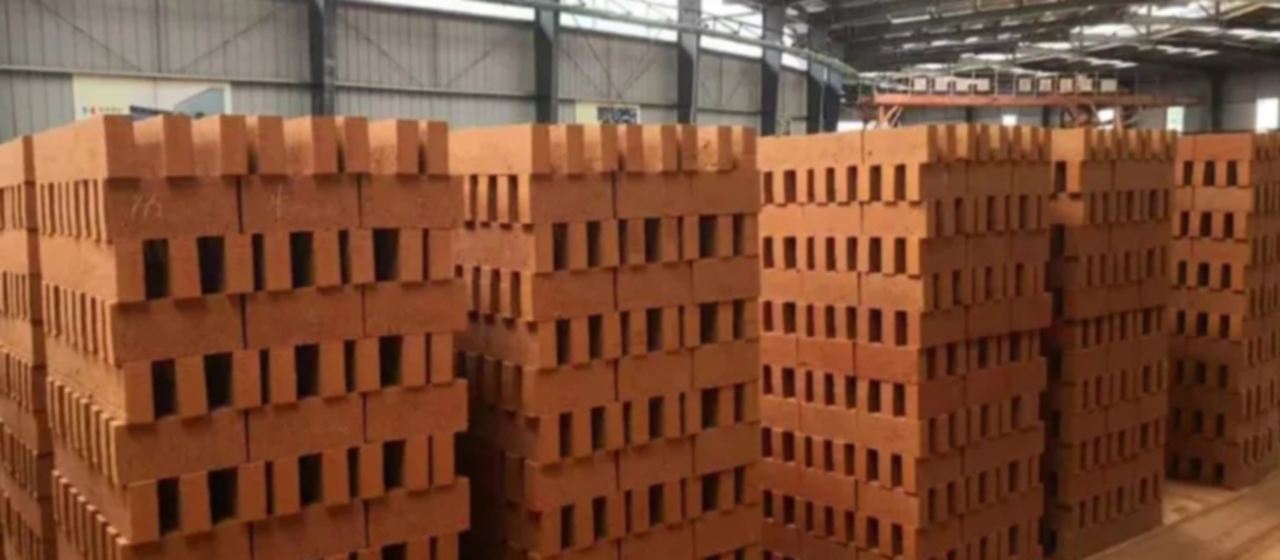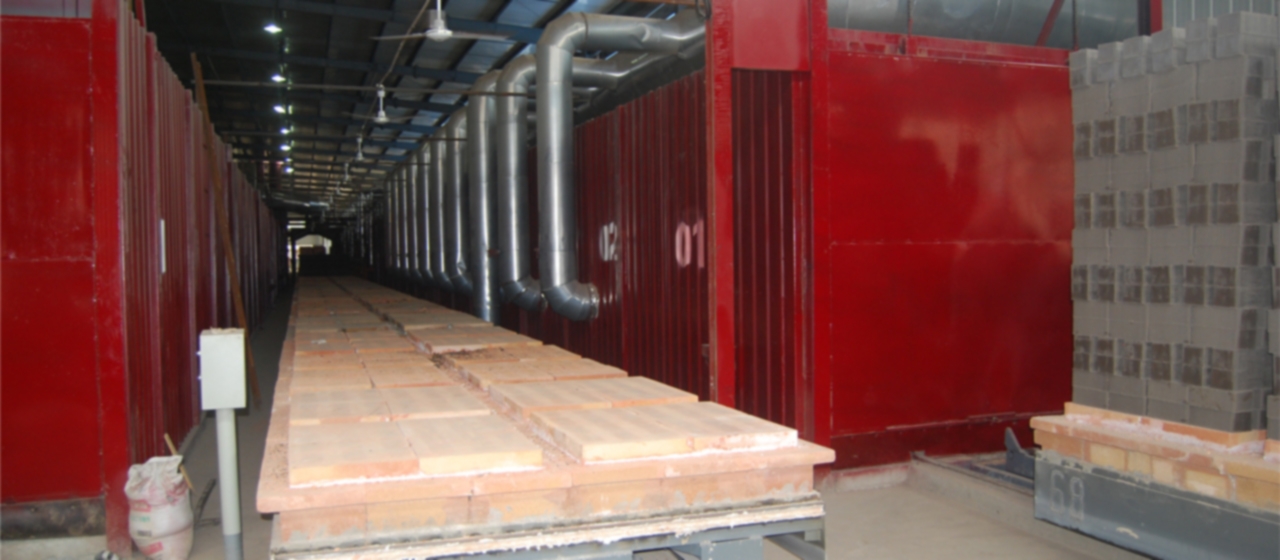construir fábricas de ladrillos
¿Qué tipo de horno es mejor para construir fábricas de ladrillos o renovar fábricas antiguas?
Desde la perspectiva de la tendencia de desarrollo de la industria del ladrillo y la teja., si estamos construyendo fábricas de ladrillos o realizando renovaciones tecnológicas en antiguas fábricas de ladrillos, El equipo de combustión preferido deben ser los hornos de túnel.. Esto se debe a que, en comparación con los hornos rotatorios y otros hornos, Los hornos de túnel están más en línea con los requisitos de las políticas nacionales de conservación de energía y reducción de emisiones., con mayores niveles de mecanización y automatización. Son una avanzada capacidad de producción en la industria del ladrillo y la teja.. The use of tunnel kilns can promote the further elimination of outdated production capacity and solve the production difficulties faced by a large number of enterprises using traditional methods to produce bricks.
1、 Reasons for choosing a tunnel kiln
En años recientes, with the gradual implementation of wall renovation policies in various provinces and cities, the implementation has been increasing. Many regions have formulated strict production technology standards based on the characteristics of brick and tile production, with specific requirements for production equipment and kilns. Effective work has been carried out to eliminate outdated production capacity, improve production processes, improve firing efficiency, and transform production methods.
1. The first reason for choosing a tunnel kiln is that the quality of the products fired in the tunnel kiln is stable and high.
With the continuous revision of national standards for brick and tile products, the continuous improvement of technical indicators, and the improvement of various performance requirements for products, the production lines using rotary kilns and some old kilns have low strength, large dimensional errors, and unstable product quality. The product quality is lower than the requirements of national standards, and some are unqualified products. The products produced by tunnel kilns have accurate dimensions, beautiful appearance, alta resistencia, and stable quality, fully meeting the requirements of national standards.
2. El segundo motivo para elegir un horno túnel es realizar una transformación tecnológica en la línea de producción y mejorar su nivel tecnológico de producción..
Las empresas originales de producción de ladrillos y tejas llevaban a cabo en su mayoría la producción y gestión de manera extensiva., y el nivel tecnológico de las fábricas de ladrillos era relativamente bajo. El equipo utilizado sólo podía producir los productos más comunes y de gama baja.. El proceso de producción depende principalmente de la mano de obra y pertenece a empresas intensivas en mano de obra.. Todo el proceso de producción rara vez utiliza equipos mecanizados y altamente automatizados., y la mayoría de las empresas rara vez consideran el uso de equipos de producción totalmente automatizados.. Con la mejora continua de la tecnología de producción y la mejora gradual del rendimiento de los equipos mecánicos de ladrillos y tejas., El proceso de producción de ladrillos y tejas sigue mejorando.. Con la profundización del trabajo de conservación de energía y reducción de emisiones, Los requisitos para las emisiones de escape de los hornos son cada vez más estrictos.. Los hornos generales ya no pueden cumplir los requisitos. Sólo eligiendo hornos de túnel las emisiones de escape durante el proceso de producción pueden cumplir con los estándares nacionales.. Las características básicas del horno túnel son la producción continua., ciclo de cocción corto, gran producción, buena calidad, alta tasa de utilización de calor, buena utilización del calor residual, y ahorro de combustible. No sólo es fácil de operar al quemar, pero también las operaciones de carga y descarga se realizan fuera del horno, mejorar significativamente las condiciones laborales de los operadores y reducir la intensidad del trabajo. Si el inversor tiene fondos suficientes, it is conducive to implementing automated operations for palletizing and unloading bricks, which is the best choice for brick and tile enterprises to upgrade their production line technology and improve the mechanization and automation level of the production process.
3. Reducing the impact of human factors on production is the third reason for choosing a tunnel kiln
In the production process, a large amount of labor is used, and there are operators in every key link. Most production processes rely on the experience of operators, and without precise measurement, operators cannot operate according to accurate process parameters. This leads to strong randomness in production, and production cannot operate according to reasonable parameters. Human factors have a significant impact on production output, product quality, eficiencia de producción, y beneficios empresariales. En el nuevo proceso de producción, Es aconsejable utilizar equipos altamente mecanizados y automatizados tanto como sea posible.. Las piezas mecánicas nunca deben usarse manualmente, y los equipos semiautomáticos nunca deben usarse en áreas donde se pueden usar equipos automatizados, para minimizar el impacto de los factores humanos en la producción.. Para el equipo de tiro, Varias operaciones del horno túnel se pueden controlar automáticamente., incluyendo levantar la puerta del horno, elevación automática de la máquina del coche superior., retorno automático de la máquina de tracción, control automático del ventilador, Monitoreo automático de la temperatura del horno., ajuste automático de la temperatura del horno, adición automática de combustible, etc., sin necesidad de operación manual. It is the most suitable kiln that can meet the requirements of fully automatic production and reduce the impact of human factors on production, which cannot be compared to other forms of kilns.
4. Improving labor productivity and reducing production costs is the fourth reason to choose tunnel kilns
The brick and tile industry is a labor-intensive industry, and now labor resources are becoming increasingly scarce, and the number of employees is constantly decreasing. Few young people are willing to engage in this industry, resulting in the majority of employees in this industry being between the ages of 40 y 50, with a relatively low labor productivity. Al mismo tiempo, personnel salaries are constantly increasing, and the cost of human resources is getting higher and higher. Si se utiliza una línea de producción con alta mecanización y automatización para la producción., Se deben utilizar máquinas en lugar de operaciones manuales tanto como sea posible para reducir el uso de personal.. Esto no sólo puede reducir los costos laborales en el proceso de producción., pero también reduce la tasa de desechos y garantiza una calidad estable del producto. El horno túnel es precisamente uno de estos equipos de combustión., que se puede operar manualmente o sin operación manual, totalmente automatizado. Esto no sólo reduce la ocupación de los recursos laborales y reduce el costo de los recursos humanos en la producción empresarial., sino que también garantiza una calidad y un rendimiento estables del producto en la línea de producción.
2、 Cuestiones a tener en cuenta a la hora de elegir un horno túnel
El horno túnel es sin duda un muy buen equipo de cocción en la industria del ladrillo y la teja., but if not selected properly, it still cannot achieve its optimal use effect, and even gives people the illusion that tunnel kiln is not easy to use, cannot be used, and inferior to other kilns, which damages the reputation of tunnel kiln.
1. Choose mature technological solutions to ensure that the production line meets standards and reaches production capacity
Cuando se utiliza un horno de túnel para quemar ladrillos, the various parameters used in production should be determined based on the basic properties of the raw materials. The firing output of a kiln is determined by the various performance indicators of the fired products that meet the requirements of national standards, rather than just firing a certain amount to determine the output of the kiln. Some kiln fired products are only 3mm~4mm on the surface and not fully burned inside. Such products that do not meet the requirements of national standards cannot be used as a basis for calculating the output of tunnel kilns. la longitud, width, and height dimensions of a kiln are calculated based on its output. Al calcular la longitud, width, and height dimensions of a kiln, factors such as the heating and cooling rate of the raw materials, el tiempo de cocción de las materias primas, the highest firing temperature, and the range of firing temperatures should be considered. The tunnel kiln should also have a complete working system, and various parameters of the working system must be calculated in detail to ensure the normal operation of the tunnel kiln, achieve the goal of correct construction and use of the tunnel kiln, and ensure that the tunnel kiln meets the standards and reaches production during the firing process.
Hoy en día, the construction of tunnel kilns can be described as “chaotic”. Various kiln construction companies have sprung up like mushrooms after rain, and various experts have appeared one after another, entering the market of brick and tile kiln construction with the momentum of “the bolder the people, the greater the output of the kiln”. Focusing closely on the concept of “low investment and high output”, we aim to capture the mentality of investors who prioritize “less investment and more output”. Regardless of the type of raw materials used, we will utilize the situation where investors do not understand how to produce them for the project. There is also a set of drawings that go global, utilizando el mismo proceso y horno independientemente de las materias primas utilizadas para la producción. El resultado es muy trágico., y muchos inversores de hornos túnel de 3,6 m de ancho sólo pueden lograr 50% de la producción reclamada en el momento de la construcción, o incluso menos. Algunos supuestos expertos ni siquiera pueden entender el principio básico del horno., el tiempo de cocción y el rango de temperatura de las materias primas, y la calidad de producción del horno túnel construido es muy mala, dando como resultado un rendimiento de producción final de sólo 50% para 60% para el horno construido por el inversor.
2. Diseñe razonablemente el sistema del horno túnel para garantizar una cocción estable.
Según la definición de horno túnel., debe estar equipado con un sistema de ventilación, sistema de combustión de combustible, sistema de entrada del coche, y sistema de sellado, que constituyen el sistema de trabajo del horno túnel. Es necesaria una estrecha coordinación de varios sistemas para garantizar el funcionamiento normal del horno túnel.. Según los requisitos de la atmósfera de cocción dentro del horno., el número y la ubicación de los ventiladores utilizados en el horno están equipados. La presión del viento de los ventiladores se determina en función de la forma de los productos cocidos y de la densidad del horno., y la cantidad de ventilación de los ventiladores se determina en función de la salida. El método del sistema de combustión de combustible., el tipo de equipo de combustión utilizado, y la disposición y cantidad del equipo de combustión debe determinarse en función del tipo de combustible utilizado., para garantizar que la temperatura dentro del horno sea lo más uniforme posible. Los contenidos principales del sistema de entrada incluyen el método de entrada y el intervalo de tiempo de entrada.. El sistema de sellado incluye el sellado entre la vagoneta del horno y el cuerpo del horno., El sellado entre la puerta del horno y el cuerpo del horno., El sellado entre la tubería y el cuerpo del horno., y el sellado entre las vagonetas del horno. The purpose of all these seals is only one, which is to isolate the interior of the tunnel kiln from the external atmosphere, create a good firing space inside the tunnel kiln, and burn semi-finished products into finished products inside the kiln. The division of the three zones during the firing process of the tunnel kiln should be based on the basic properties of the raw materials and should not be arbitrarily divided, in order to ensure the normal production and stable operation of the tunnel kiln.
The use of tunnel kilns within the industry is a bit chaotic now, and it is common to set up tunnel kiln systems arbitrarily. Many nominal tunnel kilns actually use only one shell of the tunnel kiln, which is essentially a rotary kiln. Sin embargo, the loading of the rotary kiln is placed outside the kiln, resulting in a decrease in firing quality. The reason for this is still unknown. Some are obviously rotary kilns, but they are called tunnel kilns. Various new types of kilns, such as movable tunnel kilns, rotary tunnel kilns, and rotary tunnel kilns, are actually rotary kilns. They fully utilize the working system and operating methods of rotary kilns, and the quality of the fired products is comparable to that of rotary kilns, and some are even inferior to rotary kilns. This type of kiln can only be used in areas with higher temperatures in the south, and for northern provinces, it cannot be produced in winter. Compared to tunnel kilns of the same size, the investment in this type of kiln only reduces the kiln car cost of general tunnel kilns, but its firing output is only 50% of that of tunnel kilns, or even lower. But it is this kind of kiln that claims to be a high-tech product and is widely promoted, which reminds people of a code fired rotary kiln promoted a few years ago, which was also claimed to be an advanced technological achievement. In just a few years, there are still a few companies in normal production, and time is not the wrong touchstone. I hope this situation will not happen again in the industry.
3. Recognizing the importance of kiln cars and ensuring stable quality of fired products
Kiln trucks are indispensable equipment in the production process of tunnel kilns, and are also crucial equipment for the performance and normal use of tunnel kilns. To make the kiln car play the role of a key equipment, the first step is to maintain a good seal between the kiln car and the tunnel kiln body, which completely isolates the inside and outside of the kiln, preventing cold air from entering the kiln at will, and preventing hot air from leaking into the outside of the kiln, ensuring a smooth firing process inside the kiln. En segundo lugar, the sealing between kiln cars should also be secure, as mentioned earlier. En tercer lugar, the kiln car should run smoothly, which can avoid phenomena such as kiln overturning, disparo desigual, y dificultad para entrar al coche. Fourthly, the insulation layer on the kiln car is very important. If the insulation effect of the kiln car is good, it can make the temperature inside the kiln tend to be consistent, the quality of the fired products uniform, and the color is the same. If the insulation effect of the kiln car is not good, it will cause a large temperature difference between the upper and lower parts of the kiln, and the fired products will be cooked on the top and cooked on the bottom or burnt on the top and cooked on the bottom. En breve, the product quality is uneven and the color difference is significant.
Due to the fact that kiln cars are a relatively large investment project during tunnel kiln construction, some investors, in order to save investment, cambiar arbitrariamente el material y el espesor de la capa aislante de las vagonetas del horno, lo que resulta en una disminución en su rendimiento de aislamiento. Algunas empresas de hornos, para obtener más ganancias, También reemplazar los materiales aislantes de las vagonetas del horno con materiales no aislantes o reducir el espesor de los materiales aislantes.. Las consecuencias negativas de esto no son sólo la gran diferencia de temperatura dentro del horno y la diferencia significativa en la calidad de los productos cocidos., pero también la alta temperatura debajo del auto, lo que agrava el daño a los cojinetes de las vagonetas del horno y a la estructura de acero, y afecta la vida útil de la vagoneta del horno. Algunas fábricas suelen tener problemas con las vagonetas del horno menos de un año después de su construcción., Requiere reemplazo de rodamientos.. This not only exacerbates the increase in production costs, pero también cambia la comprensión de los hornos de túnel, leading to a perception that tunnel kilns are not as good as other kilns. En realidad, the root lies in the insulation layer of the kiln car, without addressing the seemingly simple insulation layer problem. Some kiln cars do not reduce the thickness and material of the insulation layer, but the insulation effect is still very poor. The essence is that there is a deviation in the use of insulation materials, using good things but not playing the role of good things. Many industry colleagues have asked me why some tunnel kiln cars have temperatures as low as 40 ℃~50 ℃, and people can conduct inspections smoothly under the cars, while others have high temperatures, and people cannot enter the cars at all. The truth is actually very simple, it is caused by the difference in the insulation layer of the kiln car.
3、 Issues to be paid attention to during tunnel kiln construction
The performance of tunnel kilns not only depends on the completeness of the design, but also has a close relationship with construction. The quality of each construction step affects the quality and performance of tunnel kilns.
1. Se deben garantizar los materiales de construcción.
In the process of kiln design, various material properties and usage requirements were considered, and the usage location and thickness of the materials were calculated. In order to ensure construction quality, the location and amount of materials used shall not be changed arbitrarily during the construction process, nor shall the variety and quality level of materials used be changed. If substitution is required, El grado de resistencia del material estructural debe ser mayor que el del material de diseño original., and the thermal conductivity of the insulation material to be replaced must be lower than that of the original material used.
2. Construcción según requisitos de diseño.
In the use of tunnel kilns, full consideration was given to the technical requirements that should be achieved during the construction process, the difficulty of construction, and the solutions to be taken. Many specifications and standards are used in the design, including national level standards and specifications, provincial and ministerial level standards and specifications, local level standards and specifications, and industry standards and specifications. Specific requirements are proposed for each part in the construction requirements, which are in accordance with the construction specifications and standards. If any changes are required, they must be made in accordance with the corresponding provisions of the specifications and standards, and must not be changed arbitrarily. The materials used for construction are generally selected from materials published in national standards. If the specifications and models of materials need to be changed, they should be compared with national standards and replaced with materials with higher performance in the original design.

